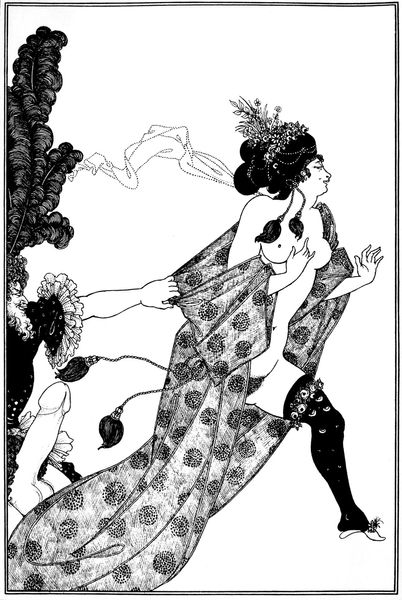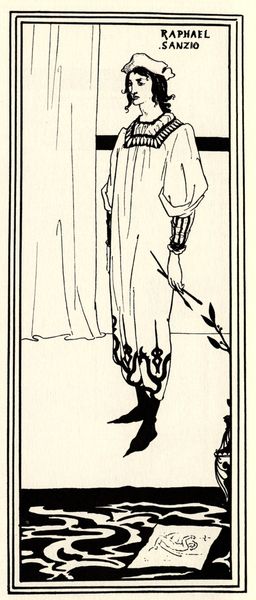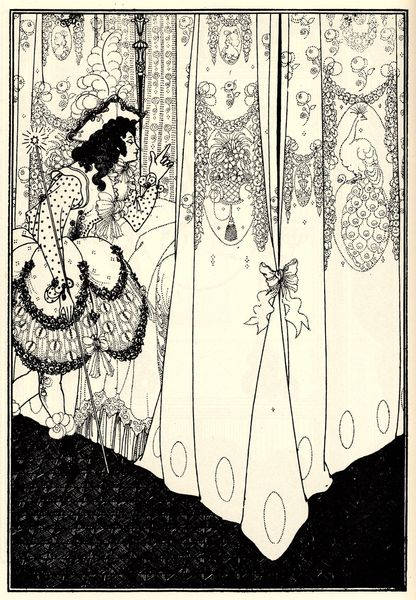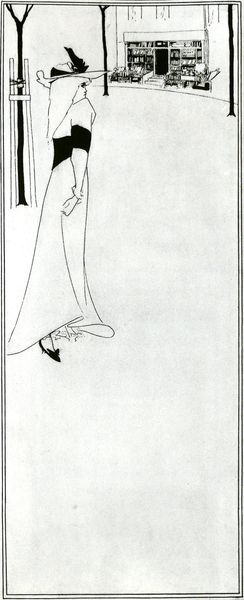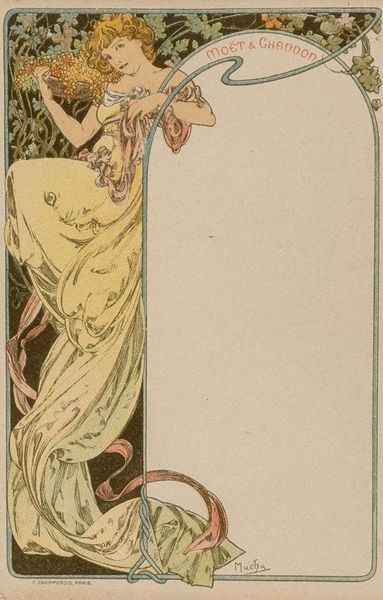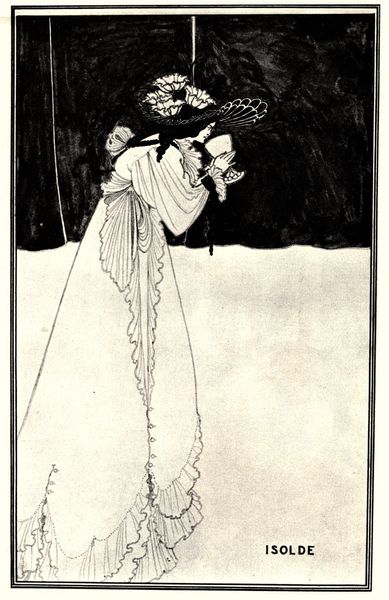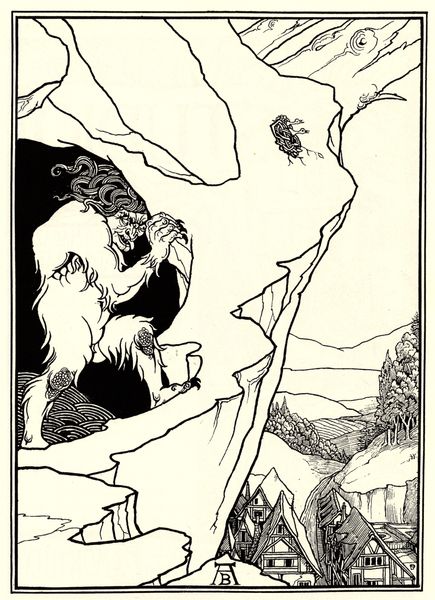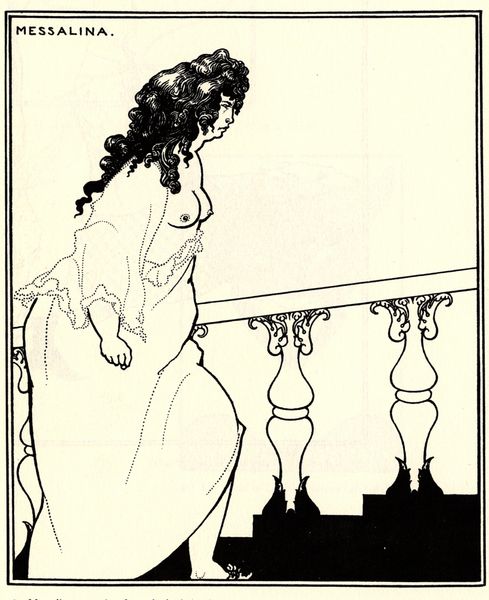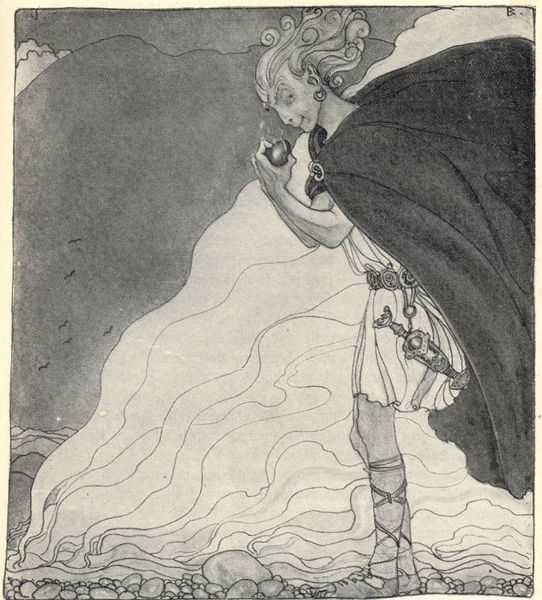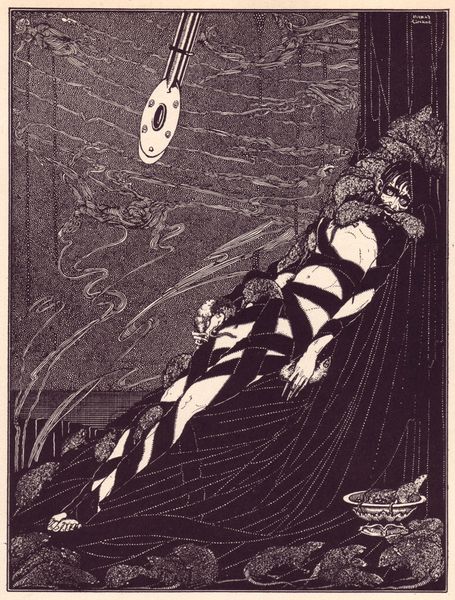
drawing, ink
#
drawing
#
art-nouveau
#
figuration
#
ink
#
roman-mythology
#
mythology
#
symbolism
#
nude
Copyright: Public domain
Curator: The elegant lines of Aubrey Beardsley’s ink drawing, "Apollo Pursuing Daphne," from 1896, immediately suggest movement, don’t they? I find its monochrome simplicity quite arresting. Editor: It's all swooping curves and sharp angles! It really has that late-nineteenth century obsession with capturing a certain ecstatic terror. A kind of hyper-refined dance with mortality, so to speak. Curator: Beardsley certainly had a flair for injecting symbolic meaning. Notice how Daphne is depicted on the verge of transformation. Her fingers sprout into branches, signifying her imminent escape from Apollo’s pursuit into a laurel tree. This transformation serves as potent commentary on female agency. Editor: Indeed, it's interesting how he uses the black ink not just to define the forms but also to emphasize a certain flatness, undermining any illusionistic depth. See how that flattened decorative foot is also heavily adorned, suggesting Daphne is sacrificing her beauty. It highlights a crisis of transformation. Curator: Precisely! The stark contrast of the figures with the minimalist background intensifies the psychological drama. Apollo, representing intellect and order, versus Daphne embodying nature and instinct, reflects the deeper cultural anxieties present within Victorian society, a societal clash in the heart of transformation. Editor: And the linear style lends it such immediacy, don’t you think? One could see this piece as a meditation on the fraught boundaries of beauty, horror, and even freedom, represented so starkly. This interplay keeps us bound to it. Curator: Absolutely, the scene is alive with these contradictions and that ultimately contributes to its lasting visual and thematic power, doesn’t it? Editor: Without a doubt, Beardsley manages to express a raw, visceral reaction using a minimal yet intensely calculated vocabulary.
Comments
No comments
Be the first to comment and join the conversation on the ultimate creative platform.
